Photography
KS4
The intent of the Photography Curriculum
This course is for anyone who is interested in developing their skills in taking photographs and expressing themselves through this visual language. You will need to be creative and take lots of photographs. You will learn technical skills, like how to use a camera and develop your work in Photoshop and you’ll study the work of other photographers.
After a short period of time learning how to use the cameras and exploring basic technical and compositional techniques, you will focus on developing your work in response to some of the most well- known photographers in the world. You will need to be able to think creatively and be able to analyse what you have done as well as analysing the work of others.
Extended learning is vital and will be set as per school policy.
Curriculum Road Map - Photography
Curriculum Sequencing Plan - Photography
The impact of the Photography Curriculum at the end of Key Stage 4
How is the course assessed?
The course is split into 2 components. The first is a major piece of Non-Examined Assessment (NEA) which is worth 60% of the overall mark. This NEA is made up of a portfolio of work covering a number of key areas of Photography, from Landscape to Fashion to Documentary photography.
The second component is an examination unit. At the end of the course you will sit a ten-hour controlled assessment spread over six sessions. You will be given the exam paper approximately ten weeks before the exam to do preparatory work.
What qualification will I get? What could it lead to?
- AQA Level 1/Level 2 GCSE (9-1) in Art and Design (Photography)
GCSE Photography could lead you into GCE A level Photography where you would develop your skills further over a two year period. GCSE could lead you into many of the creative industries.
Career directions could include:
Becoming a Photographer or a Designer, working in graphics or fashion or perhaps in film, television or advertising.
KS5
Photography – A-Level Qualification
Examining Body:
AQA
Entry Criteria:
Grade 4 or above GCSE Art and Design or Photography is desirable. Applicants not meeting this criteria may be accepted after interview
Course Leader:
Mr R Vaughan
Why? :
This course is suitable for anyone who enjoys the creative process using lens-based media. Students will explore a range of photographic techniques using both traditional and new technologies. Integral to the investigating and making process, you will explore images, artefacts and resources relating to Photography and a wider range of art and design. You will respond through practical and critical activities which demonstrate your understanding of different styles, genres and traditions.
Course Structure:
Unit 1: Personal Investigation
Unit 2: Externally set assignment
In the first term you will learn the photographic skills and techniques you need in order to successfully complete the course. These skills include the technical use of cameras so you can operate them successfully in manual mode as well as developing the ability to create work based on ideas, concepts and themes. You will need to be able to demonstrate your ability to research, develop ideas and link work to related critical/contextual materials. By term three of the course you will start the first unit of the A level which is the Personal investigation. This is your chance to develop a big portfolio of work based on a concept or theme or your choice. This unit also requires a written element of between 2,000-3,000 words. In February of the second year you will have completed Unit 1 and be ready to start Unit 2 which is an exam unit or an ‘Externally Set Assignment’. Students are given an exam paper with a choice of questions on set themes and have to develop a project in response to one of them.
There is a 15-hour exam in April of the second year when a final piece of work has to be completed.
Unit 1: Personal Investigation (60%)
Unit 2: Externally Set Assignment (40%)
Extended Learning:
To support their work in the classroom students will be required to take a substantial number of photographs every month, to experiment with creative processes and reflect upon visual imagery. They will also need to attend exhibition visits throughout the two years.







